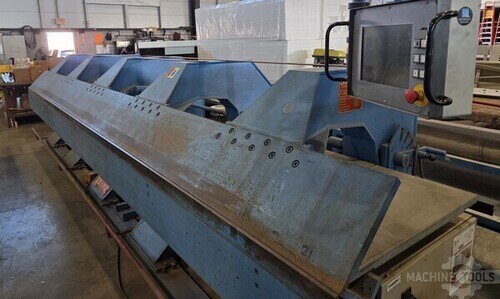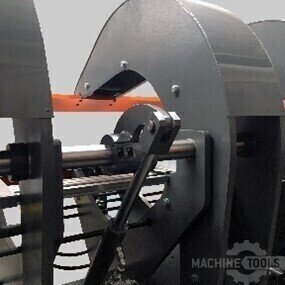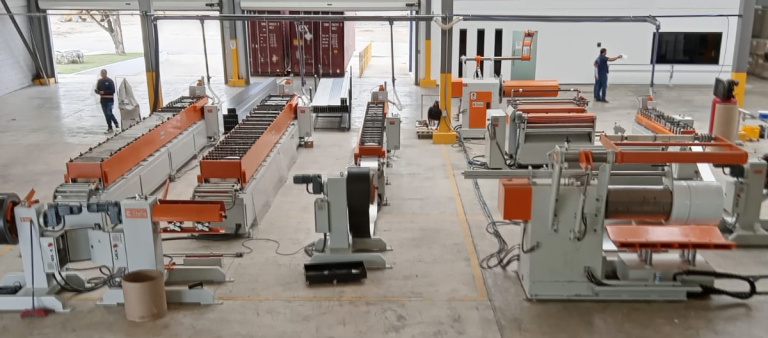Growing up on the south side of Chicago, I learned early the value of hard work, transparency, and putting people first. My journey from family-run roofing supply yards to my current role as regional sales executive at Mac-Tech has been a hands-on education in the real-world challenges facing fabrication businesses. Every day, I have the privilege of helping shop owners, plant managers, and production teams navigate the maze of folders, shears, slitters, decoilers, downspout roll formers, panel benders, and more. My mission is simple: help you achieve cleaner cuts, longer machine life, and reliable throughput so your business can thrive, no matter the market conditions.
Leveraging Decades of Expertise to Optimize Coil-Fed Production with Mac Shears
Over the years, I’ve seen firsthand how the right shear can transform coil-fed lines, boosting both quality and efficiency. Mac Shears, built on decades of engineering know-how, are designed for high-mix, high-volume environments—whether you’re cutting material for standing seam panels, commercial gutters, or custom architectural profiles. Our customers benefit from robust construction, precision-ground blades, and advanced controls that synchronize seamlessly with folders, roll formers, and material handling systems. The result? Consistent, burr-free cuts, minimized scrap, and reliable cycle performance shift after shift.
Evaluating Your Current Shearing Process: Identifying Bottlenecks and Opportunities
Before recommending any upgrade, I work side-by-side with your team to evaluate your current shearing setup. Are you experiencing excessive blade wear, uneven cuts, or frequent stoppages? Are material changes or gauge variations causing downtime? By mapping your workflow and analyzing production data, we can pinpoint bottlenecks—like manual feeding, slow cycle times, or outdated controls—that sap productivity. Often, small tweaks or retrofits (like improved blade materials or automated backgauges) can yield significant gains, but sometimes a full upgrade is the smartest path to long-term reliability.
Upgrading to High-Performance Shears: Key Considerations for Metal Folding and Roll Forming Applications
When it’s time to consider a new shear, I help you compare options across leading brands and technologies. For coil-fed lines paired with folders or roll formers, key factors include:
- Shear type: Mechanical vs. hydraulic vs. servo-driven systems
- Blade quality: High-speed steel or carbide for extended life and cleaner cuts
- Automation: Integration with line controls for hands-free operation and reduced labor
- Throughput: Cycle speeds and cut accuracy to match your production goals
Mac Shears are engineered for demanding applications, with features like programmable cut lengths, quick-change blades, and intelligent diagnostics. Whether you need a compact system for custom trim or a heavy-duty shear for 24/7 panel production, we’ll tailor the solution to your workflow.
MRGM 2560
Customizing Shear Solutions for Precision Slitting, Folding, and Speed Demands
Every shop is unique—one-size-fits-all doesn’t cut it (literally or figuratively). That’s why we offer custom shear configurations for slitting, folding, and high-speed processing. For example, if you’re running multiple gauges or alloys, we can spec variable rake settings and adjustable hold-downs to prevent material marking. For high-speed roll forming, we sync shears with line encoders to maintain tight length tolerances at full speed. And for shops handling architectural metals, we offer edge conditioning and scrap management options to keep your floor clean and your output top-notch.
Reducing Waste and Downtime: Proven Strategies for Long-Term Efficiency and Machine Longevity
No one likes surprise downtime or wasted material. That’s why I focus on proven strategies to extend machine life and minimize unplanned stops:
- Routine maintenance: Establishing blade rotation and sharpening schedules
- Operator training: Ensuring teams know how to optimize settings for each job
- Smart monitoring: Using IoT sensors and diagnostics to catch issues before they escalate
- Quick-change tooling: Reducing swap-out time for different profiles or thicknesses
With the right approach, many of our customers see 30% or more reduction in scrap and maintenance calls, along with measurable improvements in throughput. Investing in quality shears is not just about today’s cuts—it’s about setting your business up for years of reliable performance.
Frequently Asked Questions
When is the right time to upgrade a roll former or folder?
If you’re seeing increased downtime, inconsistent product quality, or you’re struggling to meet new customer specs, it might be time to upgrade. I recommend a full line audit to weigh the cost of repairs versus the ROI of a new system.
How do servo-driven folders compare to hydraulic systems?
Servo-driven folders offer faster setup, tighter tolerances, and lower operating costs due to fewer hydraulic components. They’re ideal for shops needing rapid changeovers and high repeatability.
What’s the difference between a combi-beam and double folder?
A combi-beam folder allows you to switch between straight and radius bends in one machine, while a double folder bends both up and down without flipping the part. The best choice depends on your part mix and production flow.
What are signs a roll forming line is no longer cost-effective?
Watch for rising scrap rates, excessive manual rework, or controls that can’t keep up with current production speeds. If maintenance costs are climbing, let’s talk about a phased upgrade or retrofit plan.
How can I reduce labor costs with automation?
Automation—like integrated shears, stackers, and coil handling—can cut manual labor by 30-50%. I can help you assess where automation will have the quickest payback for your operation.
What maintenance is required to keep shears running at peak performance?
Regular blade inspections, lubrication, and alignment checks are key. We offer maintenance training and service plans to keep your equipment in top shape.
Can Mac Shears be integrated with my existing control system?
Absolutely. We specialize in seamless integration with most major line controls, ensuring a smooth upgrade with minimal disruption to your workflow.
Whether you’re ready to boost your cutting efficiency, explore a tailored shear solution, or simply want a second opinion on your current setup, I’m here to help. Let’s schedule a walkthrough, demo, or a quote for your next upgrade. Reach out to me directly at pat@mac-tech.com or 414-232-7929—or fill out the form below to get started.
Get Weekly Mac-Tech News & Updates








